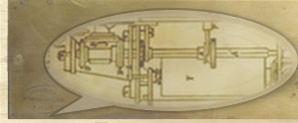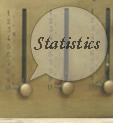 |
 |
 |
 |
 |
 |
|||||||
 |
 |
 |
 |
 |
 |
|||||||
|
|||||||||||||||||||||||||||||||||||||||
| ◄ | |||||||||||||||||||||||||||||||||||||||
Multiplier & Quotient |
One digit systems |
Counters |
||||
The quotient quest… I) The "memento" The idea to give the arithmometre “the property to display the integer(*) quotient of a division in special windows” is mentioned in a report from Benoît, dated march 1851. It is published in the well-known "Bulletin de la Société d'Encouragement pour l'Industrie Nationale" (BSEIN). This short mention follows a detailed description of the T1850 arithmometre, which, let us remind it, already incorporates the multiplier/quotient cursor. This counter gives, one after the other, the digits of a quotient. For a long quotient, the operator has to remember or to note these digits to get the final quotient. The idea to design a special window is therefore important. Perfect ! But what kind of window ? In fact Benoît’s text is not precise enough. Nothing clearly shows that the windows have to be linked in any way to the driving mechanism. It could well be a row of independent windows, called “memento” on the eight digit machines of this period. (*) Benoît improperly used the expression “integer quotient”. It must be noted that all the arithmometres since xxxx display a row of pin holes between the dials. An ivory pin can be placed at will, to materialize the position of a decimal point. It was therefore as easy to compute a decimal quotient than an integer one. Benoît was certainly aware of that. Does that mean that Benoît meant “entire quotient”, therefore thinking of a genuine counter ?
II) The multi-pointer counter
In August 1851, Thomas files an addition to his 1850 patent, teaching an “improvement the benefit of which is to display the quotient in a division, and the multiplier in a multiplication”. Benoît’s idea is on its way… We are now facing a real mechanical system, linked to the driving mechanism. Linked to the first stepped drum, a cam gives a lever a reciprocating movement. This lever is linked to a fork. Depending on the operation performed (multiplication or division), one or the other hand of this fork makes a gear advance by one tooth, clockwise or anticlockwise. This counter gear is small enough to be inserted under the carriage plate without disturbing the total dials. It is linked to the axis of a pointer, placed above the plate, pointing the number of crank turns to a dual graduation engraved in the plate. As we have as many counter gears as total dials, “the same fork will successively act on these gears as we move the carriage to the right or to the left”. The entire quotient (or multiplier) will show at the end of the operation. Thomas has achieved the first proper counter.
Remarks: We have never found any machine T1850, nor T1852, having a counter as described in the addition certificate of August 19th, 1851. We tend to think that it was never manufactured. We don’t know why this counter was not manufactured, as it was a real breakthrough compared to the previous one digit systems. Moigno, in February 1854, tells us that “ practice proved that one digit counters are not essential, not even useful ; the duty of counting turns doesn’t really bother the operator, and is not causing errors ; so they were removed.” Nota : This counter is definitely the ancestor of the counter as known later, for instance on the piano-arithmometre or on S/N 11 and S/N 16 (take care : these small serial numbers don’t mean early machines – Cf. The serial numbers saga).
III) The counter A) The piano-arithmometre of the International Exhibition of 1855) In 1855, at Paris International Exhibition, Thomas plays the big game!
« "…To begin your apprenticeship you will work on machine number four. Michael turned and saw machine number four. It was a calculating machine. It had been a long time since Pascal built such a machine whose conception seemed so amazing then. Since then, the architect Stanhope, Thomas de Colmar, Maurel and Jayet had introduced useful modifications to this type of machine. Casmondage owned some true masterpieces; the machines resembled enormous pianos; on pressing the keys, one immediately obtained totals, remainders, products or quotients…..it was evident, he was joining a bank which required, and adopted, all possible mechanical help. Besides, at this time, the volume of business and the quantity of correspondence, gave an extraordinary importance to ordinary office equipment." » / Jules Verne
So, yes! We are back to it! Remember! Seventeenth months earlier, in February 1854, the same Moigno was pleading that counters were useless! B) The counter on serial production (around 1858) Around 1858, Thomas adopts the counter on his serial models. Technically, it is not an easy task, because the carriage is already full of gears and springs. To pack up all this beau-monde without altering the machine size, the inventor had to increase the carriage plate sickness, and work on several layers. Like this, the piece parts can partially overlap without any drawback in their respective functions. It is important to note that it is difficult to assign a date to this improvement, because we dramatically lack documents covering the 1856-1862 period of time. “… It is this improvement that you can find in present machines; incidentally, it was only achieved around 1858, and as follows. Under each window of the small counter, is a small dial, mounted on an 18 tooth gear. Each dial bears, on the left as on the right, a series of digits 1, 2, 3, etc., up to 9, the digit 9 being common to both series. Each gear, when the carriage is moved, comes into gear with another gear that turns, sometimes in one direction, sometimes in the other, function of the operation being made, and that moves one tooth per crank turn.
|
www.arithmometre.org
2007